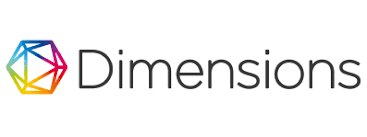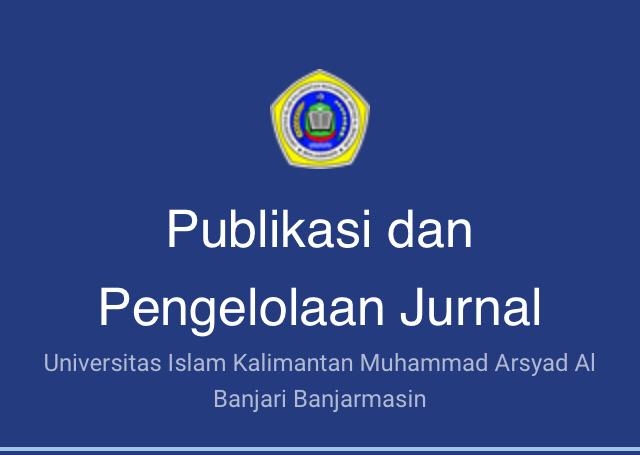KOMUNIKASI SEBAGAI ALAT KONTROL SOSIAL: ANALISIS KRITIS BERDASARKAN PEMIKIRAN FRIEDRICH POLLOCK
(1) Universitas Islam Kalimantan Muhammad Arsyad Al Banjari Banjarmasin
(2) Universitas Islam Kalimantan MAB
(3) Universitas Islam Kalimantan MAB
(*) Corresponding Author
Sari
Penelitian ini bertujuan untuk menelaah peran komunikasi sebagai alat kontrol sosial melalui analisis kritis berdasarkan pemikiran Friedrich Pollock. Metode penelitian melibatkan tinjauan literatur yang menyelidiki konsep-konsep kunci Pollock tentang kontrol sosial dan hubungannya dengan proses komunikasi. Melalui analisis mendalam terhadap karya-karya Pollock, penelitian ini mengidentifikasi elemen-elemen kritis dalam komunikasi yang berkontribusi pada pembentukan dan pemeliharaan struktur sosial. Hasil penelitian menunjukkan bahwa komunikasi, sebagaimana dikonsepsikan oleh Pollock, bukan hanya sebagai medium transmisi informasi, tetapi juga sebagai alat yang memainkan peran sentral dalam pengaturan norma-norma sosial. Dalam konteks ini, pembentukan opini publik, pembangunan narasi kolektif, dan pengendalian informasi menjadi mekanisme utama dalam menjaga stabilitas sosial. Kesimpulannya, komunikasi efektif menjadi kunci untuk memahami dan mengendalikan dinamika sosial, dengan pengaruh langsung terhadap konstruksi identitas kolektif dan pemeliharaan keseimbangan kekuasaan.
Teks Lengkap:
PDFReferensi
Altun, M. (2023). The Power of Language: Exploring its Significance in Shaping Perceptions, Beliefs, and Relationships. International Journal of Social Sciences & Educational Studies, 10(3).
Aririguzoh, S. (2022). Communication competencies, culture and SDGs: effective processes to cross-cultural communication. Humanities and Social Sciences Communications, 9(1), 1–11.
Arisandi, H. (2015). Buku Pintar Pemikiran Tokoh-Tokoh Sosiologi Dari Klasik Sampai Modern: Biografi, Gagasan, Dan Pengaruh Terhadap Dunia. IRCiSoD.
Bandura, A. (2009). Social cognitive theory of mass communication. In Media effects (pp. 110–140). Routledge.
Brown-Saracino, J. (2018). How places make us: Novel LBQ identities in four small cities. University of Chicago Press.
Castells, M. (2007). Communication, power and counter-power in the network society. International Journal of Communication, 1(1), 29.
Chen, M., & Grossklags, J. (2022). Social control in the digital transformation of society: A case study of the Chinese Social Credit System. Social Sciences, 11(6), 229.
Cisney, V. W., & Morar, N. (2020). Biopower: Foucault and beyond. University of Chicago Press.
Coffman, J. (2002). Public communication campaign evaluation. Communications Consortium Media Center, Washington, DC.
Delanty, G., & Harris, N. (2021). Critical theory and the question of technology: The Frankfurt School revisited. Thesis Eleven, 166(1), 88–108.
Economou, E., Luck, E., & Bartlett, J. (2023). Between rules, norms and shared understandings: how institutional pressures shape the implementation of data-driven communications. Journal of Communication Management, 27(1), 103–119.
Fairclough, N. (2001). Critical discourse analysis as a method in social scientific research. Methods of Critical Discourse Analysis, 5(11), 121–138.
Fuchs, C. (2020). Communication and capitalism: A critical theory. University of Westminster Press.
Hadi, I. P., Wahjudianata, M., & Indrayani, I. I. (2020). Komunikasi massa. In KOMUNIKASI MASSA. CV. Penerbit Qiara Media.
Hall, M. A. (1996). On bycatches. Reviews in Fish Biology and Fisheries, 6, 319–352.
Hidayat, O. T. (2022). Pendidikan Multikultural Menuju Masyarakat 5.0. Muhammadiyah University Press.
Janowitz, M. (1975). Sociological theory and social control. American Journal of Sociology, 81(1), 82–108.
Jones, A. (2015). Sex work in a digital era. Sociology Compass, 9(7), 558–570.
Katz, E., Lazarsfeld, P. F., & Roper, E. (2017). Personal influence: The part played by people in the flow of mass communications. Routledge.
Krafft, P. M., & Donovan, J. (2020). Disinformation by design: The use of evidence collages and platform filtering in a media manipulation campaign. Political Communication, 37(2), 194–214.
Lee, W. R., Choi, S. B., & Kang, S.-W. (2021). How leaders’ positive feedback influences employees’ innovative behavior: The mediating role of voice behavior and job autonomy. Sustainability, 13(4), 1901.
Melucci, A. (2013). The process of collective identity. In Social movements and culture (pp. 41–63). Routledge.
Muhtar, A. A. (2021). Ruang Publik dan Dakwah di Media Sosial. Dinamika Penelitian: Media Komunikasi Penelitian Sosial Keagamaan, 21(01), 22–41.
Nuernbergk, C. (2022). Public Sphere Conceptions: Public Sphere Theory. In Handbook of Media and Communication Economics: A European Perspective (pp. 1–24). Springer.
Nugroho, C. (2020). Ekonomi Politik Media Sebuah Pengantar Kritis. Mbridge Press.
Pollock, F. (1932). Die gegenwärtige Lage des Kapitalismus und die Aussichten einer planwirtschaftlichen Neuordnung. Zeitschrift Für Sozialforschung, 1(1/2), 8–27.
Pollock, F. (2020). State capitalism: its possibilities and limitations. In Critical theory and society (pp. 95–118). Routledge.
Sevignani, S. (2022). Digital transformations and the ideological formation of the public sphere: Hegemonic, populist, or popular communication? Theory, Culture & Society, 39(4), 91–109.
Smith, B. R., & Stevens, C. E. (2010). Different types of social entrepreneurship: The role of geography and embeddedness on the measurement and scaling of social value. Entrepreneurship & Regional Development, 22(6), 575–598.
Volchko, Y., Norrman, J., Ericsson, L. O., Nilsson, K. L., Markstedt, A., Öberg, M., Mossmark, F., Bobylev, N., & Tengborg, P. (2020). Subsurface planning: Towards a common understanding of the subsurface as a multifunctional resource. Land Use Policy, 90, 104316.
Widagdo, S., Suryokumoro, H., Widhiyanti, H. N., Puspitawati, D., Audrey, P., Kusumaningrum, A., Kurniaty, R., Ardhiansyah, A., Ula, H., & Madjid, Y. R. (2019). Hukum Internasional dalam Dinamika Hubungan Internasional. Universitas Brawijaya Press.
Zuiderveen Borgesius, F., Trilling, D., Möller, J., Bodó, B., De Vreese, C. H., & Helberger, N. (2016). Should we worry about filter bubbles? Internet Policy Review. Journal on Internet Regulation, 5(1).
DOI: http://dx.doi.org/10.31602/jt.v6i1.14293
Refbacks
- Saat ini tidak ada refbacks.
Jurnal Terapung : Ilmu - Ilmu Sosial is licensed under Attribution-ShareAlike 4.0 International










